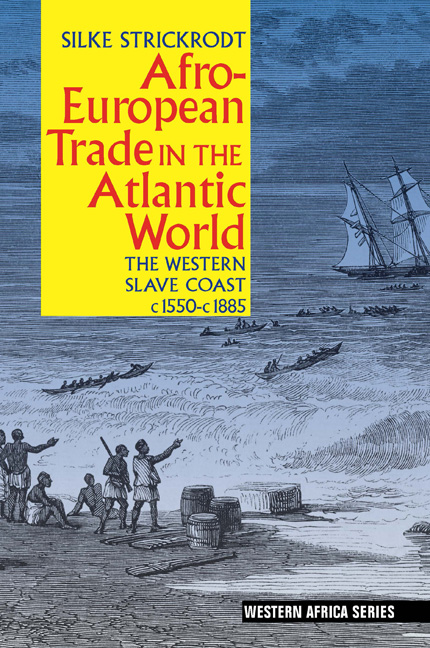Book contents
- Frontmatter
- Dedication
- Contents
- List of Maps
- List of Abbreviations
- Acknowledgements
- Map
- Introduction
- 1 The regional setting
- 2 The Atlantic connection: Little Popo & the rise of Afro-European trade, c.1600 to 1702
- 3 The era of the warrior kings: 1702 to 1772
- 4 The era of the traders: 1772 to c.1807
- 5 Disintegration & reconstitution: Political developments, 1820s to 1870s
- 6 From slaves to palm oil: Afro-European trade, c.1807 to 1870s
- Epilogue: The colonial partition & its consequences, 1870s to c.1900
- Bibliography
- Index
Epilogue: The colonial partition & its consequences, 1870s to c.1900
Published online by Cambridge University Press: 05 May 2015
- Frontmatter
- Dedication
- Contents
- List of Maps
- List of Abbreviations
- Acknowledgements
- Map
- Introduction
- 1 The regional setting
- 2 The Atlantic connection: Little Popo & the rise of Afro-European trade, c.1600 to 1702
- 3 The era of the warrior kings: 1702 to 1772
- 4 The era of the traders: 1772 to c.1807
- 5 Disintegration & reconstitution: Political developments, 1820s to 1870s
- 6 From slaves to palm oil: Afro-European trade, c.1807 to 1870s
- Epilogue: The colonial partition & its consequences, 1870s to c.1900
- Bibliography
- Index
Summary
In the 1870s, two developments occurred which had profound consequences for the political and economic life on the western Slave Coast and would eventually lead to the partition of the region among three European colonial powers. These were, first, the incorporation of the Anlo region to the west into the British Gold Coast territory and, second, the establishment of increasing numbers of foreign traders on the western Slave Coast. These developments were interconnected, the latter being mainly a result of the former.
The incorporation of the Anlo region into the British Gold Coast territory in June 1874 was part of the extension and consolidation of British political power on the Gold and Slave Coasts, the beginnings of which can be traced back to the British anti-slave trade campaign. Aspects of this process were the bombardment of Lagos in 1851, the blockade of the ports and places on the Slave Coast in early 1852, the 1852 treaties for the abolition of the slave trade, the annexation of Lagos in 1861. In 1872, the British took over the Dutch settlements on the Gold Coast. A month after the incorporation of Anlo, the Crown Colony of the Gold Coast and Lagos was created by Royal Proclamation. Between July 1876 and May 1877, the British also blockaded the coast from Porto Seguro to Porto Novo, in order to force the king of Dahomey to pay a fine.
The incorporation of Anlo into the British Gold Coast territory meant that a stiff duty was now imposed on spirits and other goods imported into the region. This prompted many of the traders who were established at Keta to move further east out of the British territory, which extended to Adafia, or at least to establish branches there. Some of these traders, French, German and Sierra Leonean, moved to Little Popo. The first German, or, more correctly, Hanseatic, firm, Friedrich M. Vietor Söhne from Bremen, established itself there in this period.
- Type
- Chapter
- Information
- Afro-European Trade in the Atlantic WorldThe Western Slave Coast, c. 1550–c.1885, pp. 225 - 236Publisher: Boydell & BrewerPrint publication year: 2015



